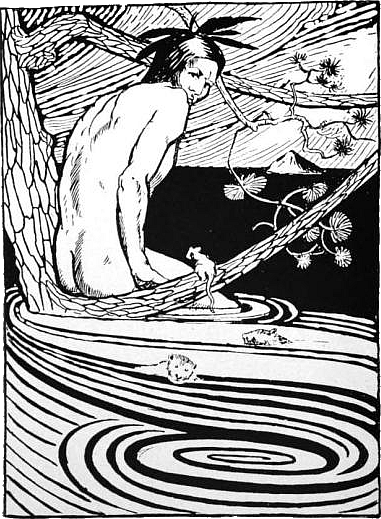The earliest known "Eight Views of Xiaoxiang," are of what is now modern Hunan Province, China, made by Song Di. As far as I can find out Song Di was a poet, painter, and government official during the Song Dynasty. His "Eight Views of Xiaoxiang" are embedded with deep symbolism referencing exile and enlightenment with references to other poets, plays on place names, and the cosmology of the time. The titles for the pieces were of as much importance as the poetry and paintings providing a frame of reference and deepening the levels of meanings within the pieces. Something to think about the next time an artist's titles a piece, "untitled." Is that to lose all point of reference, has Untitled now become a reference to other pieces untitled or a deflection of biased opinion? Any good opinion is biased isn't it? But back to the point.
During this time landscape painting reached new developments with the "Shan shui" movement. Meaning "mountain" and "river" paintings which had become a popular genre. As in many cultures mountains were viewed as home to the gods and immortals and were considered sacred. What a connection though, the Greece had Olympus; the Incans' had Machu Pichu; Mt. Ararat for Christians, Kharsag for the Babalonians; the aboriginal Guanches of Spain have, Teide; Mt. Killaraus for the Irish; Mt. Meru for Hindus and Buddhists who also have Sumeru. And then the rivers. . . I'm not even going to get into a list for those. But from these foothills of investigation is Geomythology, which only recently, in 2007, has published peer reviewed papers. Geomythology, strives to provide clues and information about past geological events alluded to in mythology: earthquakes, tsunamis, floods, impact events, and other events, which are otherwise scientifically unknown or difficult to trace otherwise.
Geomythology is seperated from Etiological myths, which provide mythological reasons why things occur such as Namazu, the earthquake causing catfish, of Japanese mythology vs. naming of the constellations and their positions. It isn't scientifically proven, but is generally accepted within Japanese culture that erratic catfish behavior such as swimming near the surface and thrashing about proceed seismic events. The ways in which we are affected by geology are varied and deep for sure. It roots itself on both sides of our legends and myths. In our past it molded the stories for the catastrophes we experienced and we attributed the events to the mountains, waters, and mysterious creatures that dwelt within them. The gods, immortals, and heroes of our folkloric history provide us with archtypes to strive for or turn from. We are reaching further into our human potential to meet the deeds of these beings through earthworks and manipulations of our landscape. The question becomes: what aspects, presented to us by and through these storied beings, of the mountains and rivers are we striving to emulate or immolate?
 |
| Nanabozho in Ojibwe flood story from an illustration by R.C. Armour, in his book North American Indian Fairy Tales, Folklore and Legends, (1905). |



No comments:
Post a Comment